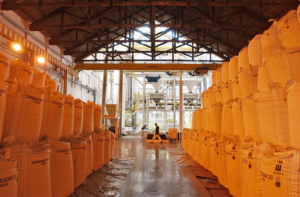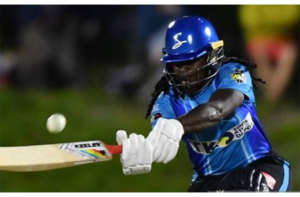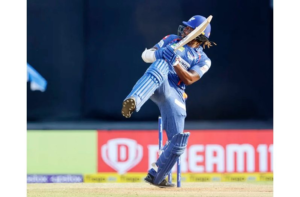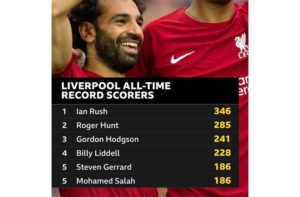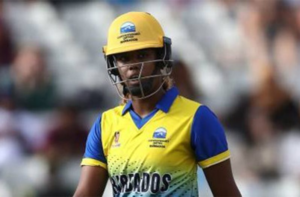King Charles and Queen Camilla crowned in historic ceremony
(BBC) – KING Charles and Queen Camilla have been crowned on a historic day of pageantry, capped by cheering by crowds in front of Buckingham Palace. Thousands packed the Mall despite the rain, after a deeply religious Coronation service at Westminster Abbey and a huge procession through London.
The King and Queen waved from the Palace balcony as the RAF Red Arrows painted the sky red, white and blue. But the BBC understands Prince Harry was not invited to join them.
The Duke of Sussex had been at the ceremony in the abbey earlier, sitting two rows back from his brother Prince William – the first time they had been seen together since Harry’s sensational memoir, Spare, was released. He left for the US straight afterwards.
The King’s day began shortly after 10:00 BST, with the procession to Westminster Abbey in the horse-drawn Diamond Jubilee State Coach, past cheering crowds and an honour guard of 1,000 members of the armed forces. Faith leaders and commonwealth leaders began the processions, with the King and Queen following behind.

The King and Queen appeared on the balcony of Buckingham Palace after the ceremony
The two-hour ceremony – the first to crown a monarch in 70 years – was watched on TV around the world, as well as some 2,300 people inside the abbey. After the crown was placed on Charles’s head cries of “God Save the King” were heard inside and outside, and gun salutes were made across the UK.
Celebrity guests were among those inside Westminster Abbey – including actress Emma Thompson and US singer Katy Perry.
US First Lady Jill Biden and her granddaughter Finnegan arrived in a three-car motorcade, although President Biden did not travel to the UK. French President Emmanuel Macron and First Lady of Ukraine Olena Zelenska were also in the abbey, as were Prime Minister Rishi Sunak and leaders of the Commonwealth countries.
In all, 90 heads of state attended, the Foreign Office said. The Coronation’s main theme was the importance of service.
“I come not to be served, but to serve,” the King said in his first prayer after reaching the abbey.
Charles was proclaimed as the “undoubted King” in the first stage of the ceremony. The congregation was then asked to show their homage and service, shouting “God Save the King”.
Yet among the music and oaths, there were moments of complete silence as each stage of the ancient ceremony finished.
Traditions rarely seen elsewhere in modern life were maintained – such as the inclusion of the orb and sceptre and the carrying of the gilded Sword of State. In one part of the service, the King was screened from public for the anointing – seen as the most sacred part of proceedings.
This was where the King was anointed with holy oils by the Archbishop of Canterbury. The need for privacy, the Palace said, was because it “has historically been regarded as a moment between the Sovereign and God”.
While waiting for the anointed King to reappear, choristers sang Handel’s Zadok the Priest – performed at every coronation since 1727. Prince William also made a pledge of loyalty to King Charles, and kissed him on the cheek, before members of the congregation were invited to offer their own support.
Returning to the Palace, it was a spectacle of pomp and pageantry as the newly crowned King and Queen travelled up The Mall in the Gold State Coach flanked by thousands of servicemen and women. In total, 4,000 armed forces personnel and 19 military bands took part – making it the biggest state occasion since the coronation of the late Queen in 1953.

The King and Queen process up The Mall lined with people as they return to Buckingham Palace
Despite the very English weather – constant rain – there was a celebratory atmosphere on The Mall, with periodic Mexican waves and police officers being cheered.
Around six protesters, who were unloading a van of placards, were arrested. In total, the Metropolitan Police said it arrested 52 people for affray, public order offences, breach of the peace and conspiracy to cause a public nuisance around the Coronation. Acknowledging concerns about the arrests, Commander Karen Findlay defended Scotland Yard’s actions, saying: “Our duty is to do so in a proportionate manner in line with relevant legislation.”
Anti-monarchy groups had defended their right to protest, but the police warned that “tolerance for any disruption, whether through protest or otherwise, will be low”.
“The reports of people being arrested for peacefully protesting the coronation are incredibly alarming”, said Human Rights Watch UK director Yasmine Ahmed. Human rights campaigner Peter Tatchell, who joined the protesters, accused the police of erecting giant barriers to obscure anti-monarchy banners.

